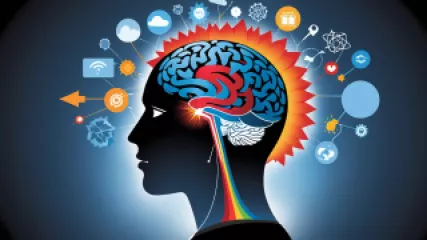Understanding and Overcoming Cognitive Biases: A Step-by-Step Guide
Understanding and Overcoming Cognitive Biases: A Step-by-Step Guide
In the complex world we live in, our minds often play tricks on us, leading us to make decisions and judgments that may not always be rational or objective. These quirks of the human mind are known as cognitive biases, and they can have a significant impact on our personal and professional lives. From snap judgments to confirmation bias, these biases can shape our beliefs, attitudes, and behaviors in ways that may not always serve us well.
In this comprehensive guide, we will delve into the fascinating realm of cognitive biases, exploring their origins, their impact, and most importantly, strategies for recognizing and overcoming them. Whether you're a student of psychology, a professional in the field of human behavior, or simply someone who wants to become a more mindful and discerning thinker, this step-by-step guide will equip you with the tools and insights you need to navigate the treacherous waters of cognitive biases.
What Are Cognitive Biases?
Cognitive biases are systematic patterns of deviation from rationality in judgment and decision-making. They are the result of our brain's innate tendency to process information in a way that is often influenced by our emotions, experiences, and preconceptions. These biases can lead us to make decisions that are not necessarily based on objective facts or logical reasoning, but rather on mental shortcuts, heuristics, and unconscious influences.
Cognitive biases arise from a variety of psychological and neurological factors, including limited information processing capacity, the need for quick decision-making, and the desire to maintain a consistent and positive self-image. As a result, we often fall victim to biases that can lead us to make suboptimal choices, overlook important information, and succumb to irrational beliefs.
The Impact of Cognitive Biases
Cognitive biases can have far-reaching consequences in our personal and professional lives. They can shape our beliefs, attitudes, and behaviors in ways that may not always serve us well. From making poor financial decisions to engaging in unhealthy behaviors, cognitive biases can have a significant impact on our well-being and success.
In the professional realm, cognitive biases can also play a pivotal role in shaping organizational decision-making, strategic planning, and team dynamics. Leaders and decision-makers who fail to recognize and mitigate the effects of cognitive biases may find themselves making suboptimal choices that can harm their organizations and negatively impact their employees and stakeholders.
Furthermore, cognitive biases can also contribute to societal issues such as prejudice, discrimination, and the perpetuation of harmful stereotypes. By understanding and addressing these biases, we can work towards creating a more just, equitable, and inclusive world.
Recognizing and Overcoming Cognitive Biases
The first step in overcoming cognitive biases is to become aware of their existence and how they manifest in our daily lives. By recognizing the various types of cognitive biases and their potential impact, we can begin to develop strategies for countering their influence.
Step 1: Identify Common Cognitive Biases
Some of the most well-known and pervasive cognitive biases include:
- Confirmation Bias: The tendency to seek out and interpret information in a way that confirms our existing beliefs and preconceptions.
- Anchoring Bias: The tendency to rely too heavily on the first piece of information we receive when making decisions.
- Availability Heuristic: The tendency to judge the likelihood of an event based on how easily we can recall similar events from memory.
- Sunk Cost Fallacy: The tendency to continue investing time, money, or effort into a decision based on what has already been invested, rather than what is best going forward.
- Hindsight Bias: The tendency to perceive past events as more predictable than they actually were.
- Framing Effect: The tendency to make different decisions based on how the same information is presented or framed.
- Bandwagon Effect: The tendency to do or believe things because many other people do the same.
By familiarizing yourself with these and other common cognitive biases, you can start to recognize when they are at play in your own decision-making and behavior.
Step 2: Develop Mindfulness and Self-Awareness
Cultivating mindfulness and self-awareness is crucial for overcoming cognitive biases. By being more attuned to our own thought processes, emotions, and decision-making patterns, we can start to recognize when our biases are influencing our judgments and choices.
One effective way to develop mindfulness is through the practice of meditation. By taking time to pause, observe our thoughts and feelings, and reflect on our actions, we can become more aware of the mental shortcuts and biases that may be guiding our decision-making.
Additionally, keeping a decision journal can help you track your thought processes and identify recurring patterns of bias. By regularly reflecting on the reasoning behind your choices, you can gain valuable insights into the cognitive biases that may be shaping your behavior.
Step 3: Challenge Your Assumptions and Beliefs
Cognitive biases often arise from our deeply held assumptions and beliefs about the world. To overcome these biases, it's essential to actively challenge and question these underlying beliefs.
One way to do this is by seeking out diverse perspectives. Exposing yourself to information, ideas, and viewpoints that differ from your own can help you recognize the limitations of your current beliefs and open your mind to new ways of thinking.
Additionally, engaging in critical thinking exercises can help you develop the skills to scrutinize your own thought processes and uncover the biases that may be influencing your judgments. This could involve carefully considering alternative explanations, questioning your own reasoning, and actively seeking out evidence that contradicts your existing beliefs.
Step 4: Embrace Cognitive Flexibility
Overcoming cognitive biases requires a certain degree of cognitive flexibility – the ability to adapt our thinking and behavior in response to changing circumstances or new information.
Developing cognitive flexibility involves being willing to admit mistakes, acknowledge uncertainty, and adapt our strategies as we navigate complex situations. This can be challenging, as our brains often prefer the comfort of familiar patterns and routines.
To cultivate cognitive flexibility, try engaging in activities that challenge your mind, such as learning a new skill, exploring different perspectives, or solving novel problems. By exposing yourself to new experiences and ways of thinking, you can strengthen your ability to adapt and overcome cognitive biases.
Step 5: Implement Debiasing Strategies
In addition to the mindset shifts discussed above, there are also specific debiasing strategies that can help you overcome cognitive biases in your decision-making and problem-solving.
One effective strategy is considering the opposite, which involves actively seeking out information and perspectives that challenge your existing beliefs and assumptions. This can help you recognize the limitations of your current thinking and consider alternative solutions.
Another useful technique is using checklists and decision-making frameworks to ensure that you are considering all relevant factors and not falling victim to biases such as selective attention or the sunk cost fallacy.
Additionally, seeking out external feedback and input from diverse sources can help you identify blind spots and counteract the effects of biases like confirmation bias and in-group favoritism.
Applying Cognitive Bias Mitigation in Your Life and Work
Overcoming cognitive biases is not a one-time event, but rather an ongoing process of self-reflection, learning, and adaptation. By incorporating the strategies discussed in this guide into your daily life and professional practice, you can become a more mindful, discerning, and effective decision-maker.
Personal Applications
In your personal life, applying cognitive bias mitigation strategies can help you make better decisions regarding your finances, relationships, health, and overall well-being. For example, you can use the consider the opposite technique when making significant financial decisions, challenging your assumptions about the potential risks and rewards. When it comes to your relationships, you can work on recognizing and overcoming the in-group bias that may lead you to favor the perspectives and opinions of those closest to you, while overlooking valuable insights from those with different backgrounds and experiences.
Professional Applications
In the professional realm, the ability to recognize and mitigate cognitive biases can be a powerful asset. Leaders and decision-makers who can identify and address biases within their organizations can foster more effective problem-solving, strategic planning, and team dynamics.
For instance, during the hiring process, being aware of confirmation bias can help you avoid making snap judgments based on limited information and instead focus on objectively evaluating each candidate's qualifications. In the context of product development, using checklists and decision-making frameworks can ensure that your team considers a diverse range of perspectives and avoids the anchoring bias that can lead to suboptimal design choices.
Conclusion: Embracing Cognitive Bias Awareness
Cognitive biases are a fundamental part of the human experience, but they don't have to control our lives. By developing a deeper understanding of these biases, cultivating self-awareness, and implementing practical strategies for overcoming them, we can become more mindful, discerning, and effective decision-makers – both in our personal lives and in our professional pursuits.
Embracing cognitive bias awareness is not about achieving perfection, but rather about continually striving to improve our thought processes and decision-making. By recognizing the power of our biases and actively working to counteract them, we can unlock our full potential, make more informed choices, and contribute to the betterment of ourselves, our organizations, and our society as a whole.
In this comprehensive guide, we've explored the fascinating realm of cognitive biases, delving into their origins, their impact, and the strategies for recognizing and overcoming them. By applying the principles and techniques outlined in this article, you can become a more mindful, discerning, and effective decision-maker, empowering you to navigate the complexities of the modern world with greater clarity and confidence.
Remember, the journey of overcoming cognitive biases is an ongoing process, one that requires a commitment to self-reflection, learning, and adaptation. As you continue to explore and apply these strategies, you'll find that your ability to make sound judgments, solve complex problems, and achieve your goals will only continue to grow.
So, embrace the challenge, be willing to challenge your own assumptions, and embark on the path to cognitive bias mastery. The rewards of this journey – in terms of personal growth, professional success, and societal impact – are truly immeasurable.






